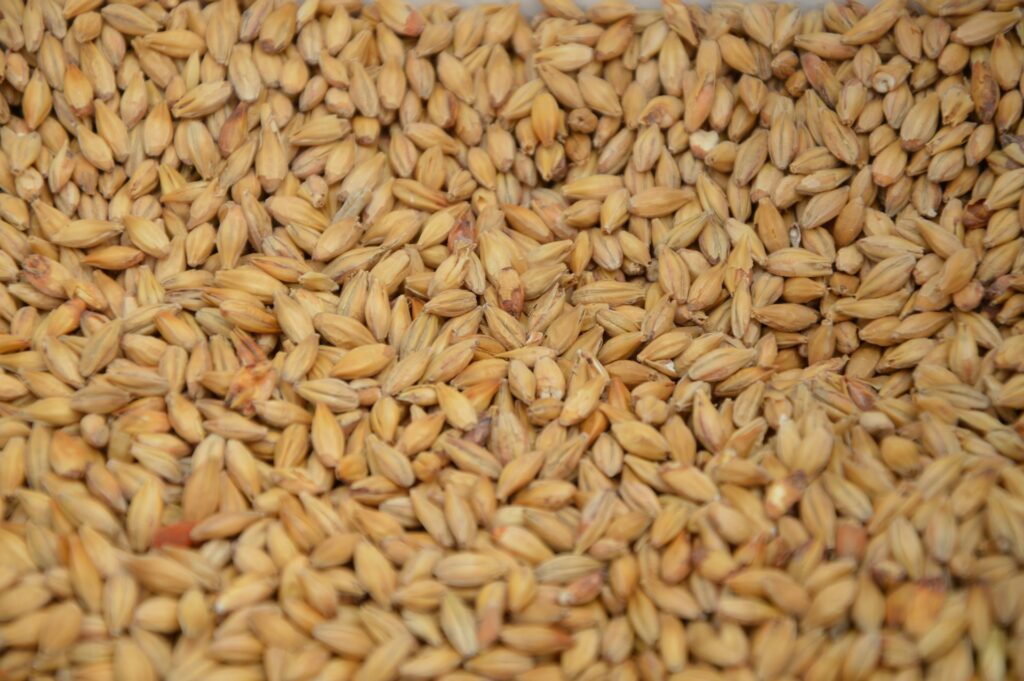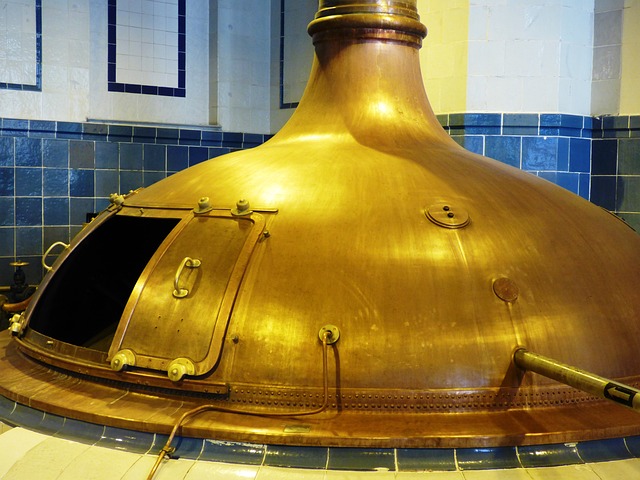You’ve probably struggled to open a bottle without a bottle opener before. Well, your struggles…
From Malt to Mature: A Complete Guide to Whisky Production
Whisky is a cherished spirit distilled from fermented grain mash and matured in charred oak casks, earning it the venerable moniker “water of life”. There are many distinct styles from Scotland, Ireland, America and beyond, but they share some common characteristics.
The purpose of this comprehensive guide is to outline the full process of crafting whisky thoroughly and deeply, from selecting grains to bottling the final product. We will extensively explore the time-honoured, traditional methods used in malting, mashing, fermenting, distilling, barrel aging and blending that all critically contribute to the rich, complex flavours and aromas. Gaining a detailed, granular understanding of the intricate science and artistry involved gives a profound appreciation of whisky’s heritage.
Whisky production follows the same general series of steps across regions, but with nuanced variations that make each unique. The specific type of grains used, distillation methods, barrel types and aging conditions significantly impact the finished flavour profile.
Even with modern innovations, the traditional techniques remain at the heart of whisky-making. There is tremendous diversity in styles, yet all whiskies share an origin in basic ingredients meticulously transformed through fermentation and long aging. Now we will fully trace the complete journey from raw materials to a mature spirit ready for drinking.

Part 1: Starting with the Malt
The foundation of whisky is the malt, or malted barley, that provides the starch converted to alcohol. To begin, distillers select only the highest quality barley grains with optimal starch content. The barley is soaked in pure water, kickstarting the germination process as enzymes naturally develop within the grain that break down starches into fermentable sugars.
Once grains have begun sprouting, germination is halted by drying and kilning using varying levels of heat that promote specific desired flavors. High kilning temperatures yield deeper, more robust malts while lower heats create lighter, more delicate grassy malts.
Throughout the entire malting stage, complex sugars and intended flavors develop. Highly skilled maltsters must closely monitor the exact duration of soaking, germinating, and kilning to achieve peak results. The precise length and degree of kilning alter the malt characteristics significantly.
Darker, longer kilned malts provide richer, dried fruit flavors while lighter kilning imparts fresh, floral notes. Some distilleries use peat smoke during kilning to impart appealing earthiness. Next, the fully dried malted barley is carefully ground into a coarse flour called grist using traditional millstones. The customized grist provides the foundation for mashing and fermentation. Subtle variations in the dried, roasted malt greatly impact the eventual whisky’s profile.

Part 2: Fermenting the Wash
Mashing initiates the next vital phase of whisky production, as grist is mixed with hot pure water in a large vat called a mash tun. Mashing allows the starch from the malted barley to convert to soluble sugars, creating a sweet liquid known as wort.
The mash is stirred at various intervals and the temperature carefully regulated to optimize sugar extraction. The exact conditions during mashing influence the fermentability and aroma of the wort. After mashing, the sugary wort is drained off and rapidly cooled to prevent spoilage.
Yeast is then added to begin the process of fermentation. As the yeast metabolizes and converts the sugars in the wort into alcohol, it produces a liquid called the wash. The specific type of yeast strain, fermenting duration and other factors critically impact flavour.
A longer fermentation may yield increased esters and congeners that provide depth. The quality of this initial wash sets the foundation. Adjustments may be made to the wash composition to achieve the desired new make spirit. The fermented wash contains about 8-10% alcohol before distillation.

Part 3: Maturation in Oak
After fermentation, the wash enters the first copper pot stills for distillation. Pot stills involve directly heating the wash in a vessel, causing the alcohol to evaporate at a lower temperature than water due to differences in volatility. Multiple distillations further increase the alcohol purity and concentrate the flavour.
Most whisky is distilled twice, sometimes three times. The precise distillation process also removes undesirable compounds. The clear, distilled spirit flows from the still at roughly 60-70% alcohol.
This robust new make spirit is then carefully transferred into oak casks to mature into whisky. By law in most regions, whisky must be aged in oak barrels. Typically reused bourbon barrels are flavoured as the American oak imparts signature sweetness. Spanish sherry, French wine, Caribbean rum, or other former barrels are also commonly used, imparting distinct flavors. Port, Madeira, and beer casks add further variety. As the spirit sits for years, it extracts desirable vanilla, coconut and char notes from the wood while interacting with the charred oak and previous contents.
Charring the inside of the barrels generates complex lignin phenolic compounds that contribute vanilla and caramel notes. Barrels are toasted at various levels using different wood sources to nurture the maturing spirit with intended qualities. The surrounding climate, humidity and storage warehouse conditions also significantly impact the aging process.
Temperature fluctuations cause the whisky to move in and out of the wood, pulling additional flavors and tannins. Cool, dry warehouses prolong maturation. Years of gentle oxidation and concentration refine the flavors while adding intricacy.
Part 4: Blending and Bottling
Malt whisky, primarily distilled from malted barley, is often expertly blended with grain whisky from wheat or corn to achieve a harmonious, consistent yet complex flavour. Highly skilled master blenders artfully select and mix specific aged malt and grain whiskies to create the distinctive balanced flavour profile for their brand. Meticulous blending gives whisky its signature taste.
Before bottling, the mature whisky is stored in temperature controlled warehouses to allow sediment to settle out. Some whiskies are chill-filtered for visual clarity and shine, while others are non-chill filtered to preserve a lush, rich texture and body. Great care is taken during bottling to prevent oxidization which damages aroma and taste.
The whisky is packaged into custom glass bottles with decorative labels indicating the region, ages, alcohol strength and other defining characteristics. The shape and size of the bottle may also accentuate certain tasting notes.

Part 5: Finishing Touches
Some whisky producers add caramel coloring to achieve a desired consistent hue, as it provides visual uniformity. However, approved additives do not alter the innate flavour. Without coloring, variations in shade naturally occur between batches. Coloring provides consistency for a brand’s look. While legal, transparency is expected on any additives.
Chill-filtration, used for clarity, is hotly debated among distillers. Although it creates a crystal clear appearance, filtration can strip away palate weight and body. Non-chill filtered whiskies aim to preserve a lush, rich texture. Whether colored, filtered, or unfiltered, the goal is maintaining true complexity. Other finishes like sherry cask maturation may provide final touches.
Lastly, strict quality control and industry standards ensure each whisky batch precisely aligns with the distiller’s specifications. With painstaking attention given from raw ingredients through maturation and blending, the whisky is complete. The final spirit offers a spectrum of alluring aromas and rewarding flavors for whisky aficionados to slowly savor.
Whisky Production: Frequently Asked Questions
Q: What grains are used to make whisky?
A: The main grain used is malted barley, which goes through the malting process to convert its internal starches to sugars that can be fermented into alcohol. Corn, wheat, rye, or other grains may also be added in the mash bill. The type of grains and proportions impact flavour.
Q: How does malting work?
A: Barley grains are soaked in water to initiate germination which activates enzymes that convert starches to fermentable sugars. Once sprouted, the barley is halted from fully germinating by drying and roasting in a kiln. This malted barley develops flavors and sugars needed for whisky.
Q: What is peat and how does it affect whisky?
A: Peat is an organic matter made of decomposed plants found in bogs in Scotland and Ireland. It can be burned to dry and roast the malted barley, imparting a smoky, earthy flavour to the whisky. Islay whiskies are known for heavy peat influence.
Q: What is the mash bill and what does it do?
A: The mash bill refers to the combination of grains used in whisky production. The ratios of various grains make up the recipe for each spirit. For example, a mash bill could be 60% corn, 20% rye, and 20% malted barley.
Q: How is whisky produced from the mash bill grains?
A: First, the grains are milled into grist. The grist is mixed with hot water to create the mash which converts starches to sugars. This mash is then fermented, distilled, and aged into whisky. The mash bill impacts the flavour profile.
Q: What is the difference between malt whisky and grain whisky?
A: Malt whisky is made primarily from malted barley while grain whisky uses high amounts of grains like corn, wheat, or rye. They are often blended. Malt whisky contributes flavour while grain whisky lightens the spirit.
Q: What does fermentation do for whisky?
A: Fermentation uses yeast to convert the sugars from the mashed grains into alcohol which creates a liquid called the wash or distiller’s beer, typically about 8-10% ABV. This prepares the wash for distillation.
Q: How is whisky distilled?
A: Most whisky is distilled using copper pot stills. The wash is heated causing the alcohol to evaporate at a lower temperature than water, allowing separation. Often a second distillation further refines and concentrates the spirit.
Q: Is there a difference between single malt, blended malt, and blended whisky?
A: Single malt whisky comes from one distillery using only malted barley. Blended malt combines several single malts. Blended whisky mixes malt whisky with less expensive grain whisky.
Q: What types of barrels are used to age whisky?
A: By law, whisky must be aged in charred new oak barrels. Typically used bourbon barrels are favoured. Sherry, port, rum, wine, and other casks are also used for desired flavors.
Q: How does aging in barrels affect the flavour?
A: Over years, the spirit absorbs flavors and compounds from the wood’s lignin and previous contents, adding flavour, color, and smoothness. Temperature changes and air exposure through the wood also affect the aging whisky.
Q: What is the purpose of blending whiskies?
A: Master blenders mix various whiskies to create the ideal balanced, consistent flavour profile for their brand. This artful blending gives the whisky its signature taste.
Q: How important is water to whisky?
A: Water is vital throughout production, from mashing to fermentation to diluting cask strength whisky to bottling proof. The minerals in water significantly influence whisky’s flavour based on the source.
Q: What are congeners, and do they impact flavour?
A: Congeners are chemical compounds produced during fermentation and aging, like esters and fusel oils. They contribute to subtle flavour and aroma in small amounts but can be unpleasant if high.
Q: What is the difference between single barrel and small batch whiskies?
A: Single barrel whiskies come from one individual cask while small batch whiskies are a curated selection of a few choice barrels blended together in limited quantities.
Conclusion
From malted grains to charred aging barrels, every step shapes the final whisky. We thoroughly and deeply explored the full progression from selecting the highest quality grains to mashing, fermenting, and distilling the wash. Maturing for years in oak barrels adds signature smoothness, roundness, and intricacy of taste. Meticulous blending of nuanced aged whiskies and careful bottling result in a refined sipping spirit.
Each traditional, time-honoured technique contributes immensely to the finished character featuring aromas ranging from fruity and floral to smoky and spicy alongside tastes from honeyed to nutty. With devoted science and artistry, craft distillers leverage generations of shared wisdom to produce incredible whiskies for all to ponder and enjoy neat, on the rocks or in cocktails. The truly complex, intricate process transforms basic ingredients into a rewarding, contemplative elixir full of subtle flavors, aroma, and character.



